Interview by Madeline Bocaro
© Madeline Bocaro, 2019. No part of this site may be reproduced in whole or in part in any manner without permission of the copyright owner.
Let’s take a tour with the fabulous Cherry Vanilla to all the places in her life.
Queens, New York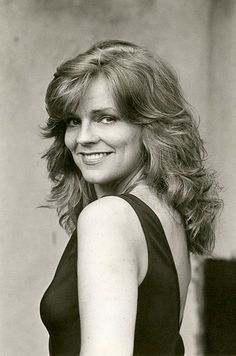
As you were born with the name Kathleen Dorritie, let’s start with childhood memories of the apartment you grew up in as Kathy, and memories of Woodside, Queens – just a few train stops from Manhattan.
It was a railroad flat, one room after another in a straight line, no hallways or doors between the rooms, hence no privacy. We were poor, but I thought we were middle-class. There was a lot of Irish anger, as well as a lot of Irish laughter in that apartment. It was clean and tidy, but like everyone in NYC, we had to work to keep the roaches and rodents at bay. I was prone to wicked earaches. In those days the local doctor would come there, even in the middle of the night, to help me with the pain. I never felt deprived of much. I was allowed to play my records, catch Elvis when he was on TV and listen (softly) to a late-night rhythm & blues radio station. Our diets were simple, but healthy enough. And I never went hungry. My dad was exactly like Archie Bunker, and my mom might as well have been the Madonna herself, in my eyes anyway. She was the kindest person I ever knew. And she was really funny too. She made novenas to the Blessed Virgin Mary, while also reading palms and tea leaves, and being totally superstitious. I lived there with them and my older brother and two sisters throughout the nineteen-forties, fifties and early sixties. I know now what a dump of an apartment it was. But It didn’t seem bad at all when I was growing up there. I was always living more in my imagination anyway.
The Copacabana, NYC
It was cool that your mom worked in a hotel above New York City’s Copacabana night club enabling you to meet celebrities as a young girl. What are your memories of taking the train to the city, and of the old glamour you witnessed there?

Being exposed to the Copa was like discovering a parallel universe. And who could ever settle for a bourgeois future in Queens after seeing what was going on right across the river in Manhattan? My whole idea of show biz, nightlife and adult life in general was formed by the Copacabana. Even during the punk period, I was a throwback to the Copa Girls in the way that I presented myself … Vogue worthy make-up and hair, skimpy costumes, lots of leg. I even carried my own special lavender gels on the road with me, so the stage lighting would be more flattering. Early on, I used to ride into Manhattan with my dad, when he’d pick my mom up from her late shift at the hotel. That’s when I got to see the Copa shows and meet the stars. But once I got to be eleven or twelve and started taking the subway into the city (as we called Manhattan) on my own, I would have the hotel as my stopping-off place. The staff all welcomed and watched-over me, even on my mom’s days off. The Copa and Hotel Fourteen was my connection to glamor and sophistication, but also my safe haven in the fascinating new world I was so eager to explore.
(Let’s talk about New York City by decade, as I’m sure there are different stories about each. First, the 1960s…)
New York City – 1960s
Describe your days working at ad agencies on Madison Avenue. How real is the TV series Mad Men compared to your experience?
Mad Men got it almost exactly right. The group I fell in with at Kastor Hilton Chesley Clifford and Attherton was maybe a bit more outrageous in the sex and drugs area. But overall, it was amazingly accurate. Back then, Madison Avenue was like the daytime equivalent to nightlife at the Copa … a glamorous field in which to work. And I seemed to have magically avoided the misogyny that was so prevalent in that world at the time. Plus, I learned more about filmmaking on the job there, than I ever did at The New School for Social Research where I’d been taking courses. I was also learning a lot about food, wine, fashion and lifestyle from my colleagues, with whom I lunched and partied. I was seventeen in 1961, when I got my first ad agency job. By 1965, I’d added DJ-ing and acting gigs on the weekends. And by 1971, I was pretty much done with making TV commercials. No matter what new endeavor I ever took on though, my Madison Avenue background seemed to provide the foundation and confidence I needed to meet the next challenge.
What was the name of the Club in New York City where you were a DJ? What records did you play?
Aux Puces. It means “of the fleas,” and it was named that because everything in it was for sale, like at a flea market … the furniture, dishes, utensils, etc. It was one of the earliest discotheques in New York, back when they were chic and intimate, not all laser-lit and cavernous like they later became. It wasn’t exactly private, but you had to know someone or be somewhat famous or drop-dead gorgeous to get in. There was no velvet rope, but you kind of knew if you belonged there or not. I played mostly Motown but would also throw in some unexpected tracks now and then … Led Zeppelin, Iron Butterfly, Leon Russell, Janice, Joni, Jimi, and such. In 1969, I DJ’ed in the south of France, at a club called Saint Halliare de la Mer, and then did another year or two at Aux Puces, before giving it up to work for Andy Warhol, and then David Bowie.
You frequented The Fillmore East and Max’s Kansas City (later performing there). What were those scenes like?
The Fillmore East tickets were cheap, like $4.50. Once you made friends with the backstage crew, you could get in for free via the stage door on East Sixth Street. Bill Graham (the Fillmore’s owner) was pretty strict with groupies, but as long as you respected his rules you could stand off to the side in the wings and catch three of the best acts in rock & roll from just a few feet away, and then hang out in their dressing rooms with them between sets. I was there every night that I possibly could be. And afterwards, if I didn’t decide to jump on someone’s tour bus or go to their hotel room, I would wind up at Max’s.
The backroom at Max’s was like a big red neon womb, a place where you felt safe and secure, whether you could afford to buy a drink or not. There was always the free coffee and chickpeas for the regulars. And there were always friends and fellow artists there, who’d make room for you at their table. Whatever was going on in the city, especially with music, art and theater, you would hear about it at Max’s. And much like Aux Puces, you just kind of knew if you were cool enough to hang out there or not. To graduate from doing “Showtime” on a table-top in the backroom, to performing with my very own band on the stage upstairs was like some kind of miracle. But at the same time, just seemed like a totally natural progression with the same sense of healthy competition and camaraderie all around me.
Cherry, Leee Black Childers, Debbie Harry, Dee Dee Ramone
Donald Lyons, Pristine Condition and Lou Reed at Max’s
Photo: Leee Black Childers
And there were some wild and gay weekends on Fire Island…
When I first went to Fire Island in 1961, it was to Davis Park/Ocean Ridge, a kind of hetero singles community where the Mad Ave crowd vacationed. LSD was still legal and we did lots of it there, and had whipped-cream parties and orgies in our geodesic dome house every weekend. By the mid-sixties, I discovered The Pines which had by then become the place to be. It’s where the beautiful people were. And they were pretty much all gay. With no cars on the island, there was a wonderful sense of safety and freedom, an occasional splinter from walking barefoot on the boardwalks being about the only peril. And having to take a ferry or seaplane to get there, made for a kind of instant disconnect from one’s workaday life. Between the swimming, dancing, fucking and walking on the beach, it was easy to stay in shape for wearing the tiniest of bikinis and for attracting the bi-boys and the hetero surfers who hung out there. A big percentage of The Pines regulars were in show biz, so the parties were spectacular productions, usually featuring a psychedelically spiked punch bowl, making them seem all the more spectacular. If you had asked me during the 1960’s and 70’s to name my favorite place on earth, without skipping a beat I would surely have replied, “Fire Island.”
When and where did you change your name to Cherry Vanilla?
I made it up while recording an Abbie Hoffman anti-war tape for Radio Hanoi. I had never intended to use it for anything else, but Lester Bangs, an editor at Creem Magazine, suggested I use it for the pieces I was writing for him and for other rock magazines at the time. Since I was also writing for sex magazines back then, it proved useful in keeping my parents from knowing it was me. I never officially changed my name to Cherry Vanilla, but I got a DBA so that I could get paid as such. And in 1971 I joined Actor’s Equity, using it as my stage name, same as I did with SAG, AFTRA and ASCAP in the years following. When the Bowie’s came to town in 1972, Angie started calling me Vanilla, and eventually all of my friends followed, using one form or other of the name … Cherry, Vanilla, Ms. Vanilla or C.V. When I dyed my hair a maraschino pink (1973) and began performing my own poetry (1974) the transformation was complete. Except for the name on a few legal documents, Kathy Dorritie was no more. Cherry Vanilla seemed a much better fit.
Then came your NYC days in theater… You were also with Andy Warhol and his factory gang – performing in his play Pork which later traveled to London.
Andy Warhol’s Pork was done for a few weeks at LaMama, but I wasn’t in that production. Andy wasn’t happy with the actress playing Pork. So, when the play was being moved to London, Andy cast me in the role. The other Tony Ingrassia directed plays I did were mostly staged at the New York Theater Ensemble space on 2nd Street in the East Village.
Tell me your impressions and memories of Andy.
I thought Andy was adorable, kind of childish. I never got into any deep business dealings with him, or even that close to him socially. So, things were always quite light in our relationship. He liked to talk with me about my Catholic school days and about what was going on on Madison Avenue. But he mostly mostly liked to talk about who were the cutest male models, and which ones I was fucking. He always wanted to know who had the biggest dick and who was the best sex and such. My fondest memory of him, funny enough, was of just casually running into him one day on the upper East Side of Manhattan. The weather was beautiful. We just sat down on the sidewalk and talked for a while. It was very relaxed and sweet. It was the only time I can remember him taking a photo of me, just a little black and white snapshot. I got a note a few years back from some museum in the mid-west, saying the photo was in its permanent collection, but for the life of me, I can’t remember which museum it is.
(We have located the photo!)
Cherry Vanilla by Andy Warhol
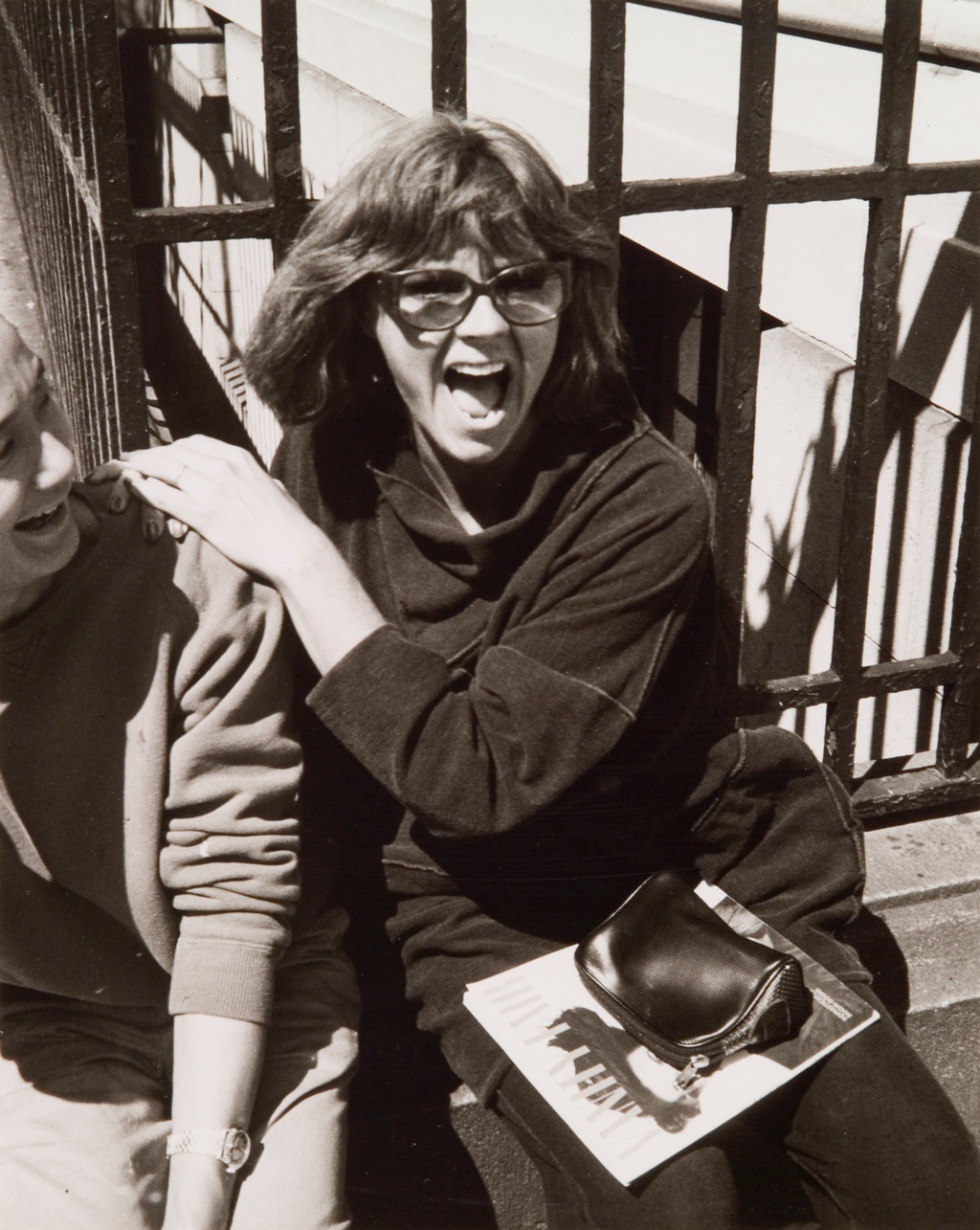

I’d love to hear about your time in NYC with factory friends Holly Woodlawn, Candy Darling, Jackie Curtis (all characters in Lou Reed’s song ‘Walk on the Wild Side’), Jayne County and Leee Black Childers when cross dressing was still illegal in NYC – before the Stonewall riots.
Candy Darling, Jackie Curtis and Holly Woodlawn
Cross-dressing was so common around Max’s and the factory back then, I didn’t even think about its being illegal. I never actually saw the cops harassing any drag queens, though I’m sure it must have gone on. Maybe I was kind of tuned-out to things that didn’t directly concern me. My only activism back then was focused pretty much on the Viet Nam War. And Inside of the protective little psychedelic bubble, in which l managed to live, everything was sparkly and fine. Candy, Holly and Jackie were like the Blessed Trinity of drag queens, and each one had their own unique style. Candy seemed so fragile to me, I hardly ever spoke with her. Her Marilyn Monroe vibe was not at all like a typical drag queen’s. She was channeling Marilyn from a much deeper place. Jackie was a gifted writer, very creative, funny and bright. She would show up at Max’s in total drag one night, but then return the next night in 1950’s chinos and a button-down shirt, with no make-up, no wig, and with a five-o’clock shadow. When in drag, Jackie had a definite I Love Lucy aura. When not, she was John Steinbeck or Indiana Jones. Holly is the one I knew best. She was funny and extremely good-natured. I guess, since I’m making comparisons here, Holly’s Puerto Rican heritage would surely make her the Carmen Miranda of the trio. She wasn’t an exceptional singer, and was always going up in her lines or making faux pas in the plays she did. But Holly was an amazing entertainer who could make you bust a gut laughing at her deliveries and improvs in the plays, or simply enjoy the torch singer illusion she loved to create in cabarets.

Jackie: Herself and Himself
Pork poster / Andy Warhol and Candy Darling
I never saw Jayne do drag until 1971, when we were living together in London doing Pork. She was in all of the plays I did. She was completely professional on stage and fun to hangout with off-stage. She was as crazy for rock & roll as I was, and that’s the area in which we related most. Leee was my favorite of all of them. Leee and I were quite the pair, the groupie/magazine-writer and rock & roll photographer freeloading backstage at every concert and at every record company promo party, while legitimately working for a publication at only about ten percent of them. Leee never did drag, but he had a natural, almost feminine beauty. And he was the first person I ever saw with electric blue hair. He colored it with magic markers back then. And he always wore a little eyeliner as well. But whatever Leee’s fashion and sexual preferences, he was first and foremost a true Kentucky gentlemen. And I miss him the most of the ones who are gone.
Leee Black Childers and Cyrinda Foxe / Jayne County
New York City – 1970s
What was it like when Bowie came to tour America in 1972, when his Mainman management office was based in New York City?
It was totally chaotic, totally improvised and totally fabulous. The fact that we (Tony Zanetta, Leee and I) had no experience in that field, and that Tony Defries allowed us to make it all up as we went along, resulted in what was probably the most unique and most successful rock star launch in history. And what made it so much fun was that we three were already such good friends. We saw it all as a play, in which we were each writing our own roles. And whether we made fools of ourselves or not, Defries always stood behind us, backed us up with RCA, the promoters and the press. It was like being given the freedom to execute your wildest schemes, without the fear of failing. And though we worked our asses off for peanuts to prove to the world that Bowie was a star, we had such a ball doing it, it was like we were getting paid to party. And having the accouterments, like limos and an uptown office allowed us to play our parts to the hilt. And, of course, the fact that in the end we had such a huge success was the cherry on top.
Tony Zanetta and David Bowie / Mick Ronson Mainman billboard
in Times Square, 1974
In Los Angeles with DJ Rodney Bingenheimer and Iggy Pop:

I’d love to hear about your performances at the club Trude Heller’s in Greenwich Village in the late 70s, where your posterior was immortalized in cement and hung outside the club for years. And a bit about Trude herself, a very interesting character!


Photo: Arthur Nager
Starring Cherry Vanilla!
Trude was an icon of sorts in New York’s Greenwich Village. Even when I was too young to actually get into her club, I used to hang out on the street corner outside of it, checking out the colorful clientele. Lenny Bruce played there and Marilyn Monroe hung out there. And when Trude got to know me, she told me I was a combination of them both, which I couldn’t help but love. She was a tough business woman, and paid me as little as she possibly could. But she booked me like crazy when I had the band, and allowed me to have Lance Loud and the Mumps as my opening act. I guested at her Fire Island Pines beach house one weekend and woke up with the worst case of hepatitis b. She should have taken me to the city and a hospital immediately, but she instead made me wait until Monday morning to drive me in. Despite her reputation as a major lesbian predator though, she never once came on to me sexually. Maybe the hepatitis actually saved me from that. I played often at Trude’s, and lots of stars came to see me there, including Bowie. Trude was one of the first club owners to believe in me. She really helped launch my rock & roll career. I will always remember her fondly.
Oh, and that big pink block of cement with my ass print? Unbeknownst to me, some friends of mine actually managed to steal that from in front of the club one night, using a borrowed backhoe, and had it at their Chelsea loft for years.
It was originally intended to be imbedded in the sidewalk in front of the club, as the first installment in a Greenwich Village Walk of Fame. I don’t know what happened to it. I heard tell the cement froze and broke into a million pieces one winter. Who knows?
Bowie and Jagger attended your show at Reno Sweeny’s. What was that show like?

OMG! It was my very first night club booking ever. I was Holly Woodlawn’s opening act, and I had no idea what I was doing. Reno’s was a very sophisticated spot … elegant, expensive, mixed gay and straight. And its owner, Lewis Friedman took a shine to me, much like Trude Heller did. I started out as a cabaret comedienne, doing songs about not being able to sing and poems about vibrators, smiley-face pancakes and threesomes with the sexy cops on Fire Island. And I wrote a whole new show for each engagement. I could somehow get away with the material and make everyone laugh hysterically when it was fresh, but I just couldn’t make it funny two months later. At that first booking, when Bowie and Jagger showed up, the whole club was abuzz with a classy excitement. I remember my friend, David Smith (Reno’s bartender) sent them a bottle of the best champagne – on the house – for which Mick left the waiter a $100 tip. They posed for a quick photo of us in the dressing room, and told me they’d see me at my loft later that night. But they never showed up until a few nights later, when Mick hung out in my living room playing records while David and I had sex in my bedroom. I still don’t know why we didn’t ask Mick to join us that night. And I never got another chance to have sex with Mick. Too bad.
Cherry by Leee Black Childers

London Calling
After seeing Warhol’s play Pork in London, Bowie hired some of the stars and entourage – Cherry, Tony Zanetta and Leee Black Childers) as the public relations team for his management company Mainman – so it was off to London…
What was it like promoting Bowie (as Ziggy Stardust) in England?
It was such a whirlwind, I can hardly remember any details now. RCA London had a bit of a chip on its collective shoulder because Bowie (a UK act) had actually signed with RCA USA. They were jealous, and just didn’t seem to take David, or me, seriously. But luckily, the guy I deemed to be Mainman’s chief RCA liaison, Andrew Hoy totally saved the day. He was young and gay and believed in everything we were doing. And we got to do a lot, including those MY WORLD by DAVID BOWIE columns for Mirabelle magazine, that proved to be so effective in promoting David to its pre-teen female readers, a fast-growing and most desirable demographic.

David wasn’t difficult. He did what he was asked to do, as long as it was pre-approved by Defries. In order to keep David fresh and exclusive, I did many of the interviews that the press requested. Being American and having my history, I was often novelty enough for their pages. And they could bash me without bashing him, maybe hoping they would still get the real thing in the future. I loved the first-class travel and the posh hotels. And I loved having the authority and the trust that David and Mainman had bestowed on me. Once again, I found myself in a kind of Doris Day movie role, too glamorous to be real. But, by some miracle of fate it actually was.
By that time (around 1974), I had my own little division of Mainman, called Mainman Productions, and my own downtown office space, separate from the rest of Mainman. With my film production knowledge and experience, I had proposed the new division to Defries, and he okayed it. I hired my old friend, Macs McAree from Kaster Hilton Chesley Clifford and Atherton to direct the films that I would write and produce under the Mainman banner.

Macs and I knew how to do it for peanuts, thanks to having made underground movies on the weekends during our Mad Ave days. I convinced Defries that we should shoot everything, because the software would be much in demand in the future. Ronson at the Rainbow was to be our biggest budget production, coming in at about $30,000 as I remember, for a 16-mm multi-camera shoot, with full crew, equipment rental, travel, lodging, editing, finishing and prints. Mick was quite nervous at the Rainbow concert (which was to comprise a major portion of the film), so Defries, due to what he deemed an imperfect concert performance, felt the film was not worthy of finishing. And the footage sat in storage for years. (Some of it has since appeared in Ronson documentaries.) Though this wasn’t a failure due to anything on my part, Defries thought I was getting a little carried away with my plans and budgets for more shoots, including a full-length docu-drama about Mainman, titled Faaaabulous! And he soon pulled the plug on Mainman Productions. But not without giving Macs and me $2,000 to start our own production company, making music videos… for which, unfortunately, a market in the US had not yet been created. That’s when we published my book instead, Pop Tart Compositions.
Mick Ronson backstage at The Rainbow, London
You also worked on Bowie’s American TV special The 1980 Floor Show, filmed at The Marquee in London. What was your involvement?
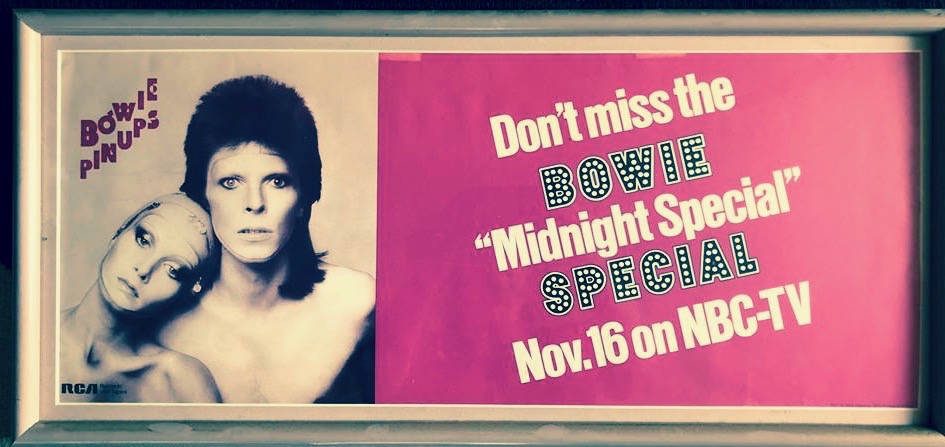
My involvement with it in London was only to be an adviser on what I thought the NBC-TV crew was doing right or wrong. I was almost like a guest at that shoot. However, once the footage got to the editing room in Burbank, California, my involvement increased. Defries sent me out there to oversee every shot of Bowie, and make sure they were using the most flattering choices available. That NBC crew hated having me there, with my limo, my opinions and my Mainman authority. But the deal they’d made with Defries forced them to respect me. I’ll never forget when Angie and I went to Burt Sugarman’s office (the show’s creator/producer), and he very suggestively showed us his private bedroom there. She and I still get a good laugh out of that.
Cherry and Angela Bowie
What I remember most about that Mainman assignment though, was my wonderful suite at the Beverly Wilshire and the evening that Warren Beatty and Joni Mitchell visited me there. Warren lived at the hotel at the time, and was dating Joni. I had lured him to my room with a poem. And I think he brought Joni along for protection. We had drinks, and Joni was totally comfortable. But Warren, upon seeing a VHS tape on an end table, got a bit paranoid about possible hidden cameras, and kind of cut the visit short. The tape was of Toni Basil’s street-style dance troupe, The Lockers. It was the first any of us had seen them. And as soon as we showed it to David, he hired Toni as the choreographer for his Diamond Dogs tour.
Cherry and David circa Diamond Dogs.
You returned to tour clubs in England in the early days of the Punk era, with your own band featuring Sting (future member of The Police) and recorded a couple of albums. Did you enjoy Punk as much as Glam?
Not really. I liked the energy of Punk, and the fact that it was a movement. I don’t think glam was ever really a movement. But I wasn’t crazy about the spitting and the facial piercings and such. Glam was prettier. Sting was already a member of the Police, but they weren’t able to get gigs, because they had no publicity hook. So, my agent, Miles Copeland (Stewart Copeland’s brother) managed to get them booked as my opening act, and then have Stewart and Sting play with my American musicians, Louie Lepore and Zecca Esquibel for my set. It was working out pretty nicely until I got pregnant and had to leave the road for a while. That’s when Miles got them booked on Jayne County’s tour.
At The Roxy, London with Sting
Greece
Tell me about your time in Greece with Vangelis.
I made many many chic business-class journeys to Greece in the twenty years I officially worked for Vangelis (1995 – 2015). He and I had been friends since we’d first met at RCA London in 1977 when we were both on the label. I feel blessed to have been introduced to the wonders of his homeland by him and by his Greek lawyer, Mr. Kalifatis, with whom I had most of my business dealings, and with whom I enjoyed many mini-vacations over there. I was never a tourist in Greece, but rather a member of the family when I went anywhere. And it being Vangelis’s family, I was treated like royalty. He’s one of Greece’s biggest stars and is held in great esteem by his countrymen there. I can’t say it was easy working for Vangelis. But I can say it was an honor. And I couldn’t have come to know and love Greece so much in any way better than the way I have. I have many favorite places there, but I would have to say that Mr. Miltos’s fish taverna in Perdika on the island of Aegina is one that comes to mind quite often. Ah, barbounia in the moonlight by the blue Agean Sea.

Living in L.A.
I loved visiting you at your fabulous home in Los Angeles. How long did you live there, and what are your memories of that time and place.

I loved it too. With it’s twenty-foot ceilings, fireplace, patio, three-and-a-half bathrooms and art-deco style, it was a fantastic place to live and entertain. And its location in the heart of Hollywood, right near the famous Runyon Canyon made it super convenient for the many visitors and house guests I had, including Tim Burton, Malcolm McLaren, Cameron Crowe, Sebastian Bach, Charlize Theron, Rufus Wainwright, Charlotte Rampling, Pat Loud and Van Dyke Parks, to name a few of the more famous ones. The apartment had a fantastic vibe even before I moved in. And I hope my twenty years there added to it immensely. The current tenants tell me it’s still a very magical place. I left there kicking and screaming when Vangelis retired me, because I really never wanted to leave. But I will always have the wonderful memories of the many many good times I had there. And, as things have turned out, it was actually the perfect time for me to leave LA and move to my now beloved Palm Springs.
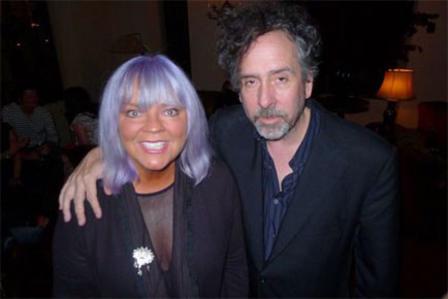
Cherry and Tim Burton
Are you happy living in Palm Springs?
You know, it might sound corny for a seventy-six year old to be saying this, but I am maybe the happiest I have ever been, living here. I have an adorable two-bed/two-bath apartment with fireplace, patio and pool for less than half of what most New Yorkers are paying for a rundown studio walk-up in the East Village. I wake up each morning to the bluest of skies anywhere, with the palm trees and the majestic mountains right outside my door. And since I’m not in the sticks, but rather in a fully-functioning sophisticated little city, I have at my fingertips everything an old New York City born and bred girl like me could ever desire. It’s here in Palm Springs that I feel I am truly fulfilling my destiny as a writer, working on my first play ever. I don’t know if it’s this place, or maybe just the spiritual place I’m at in my life now, but it just feels like there’s more time out here. Less distractions, less rush, less pressure to have to make something commercial, or even a success. I live on much less money than I used to, and I am proud and happy about that. And yet, to quote Dylan … “She got everything she needs … she’s an artist … she don’t look back.” Of course, it’s no place for anyone who can’t take the heat, or who doesn’t like seeing rainbows everywhere.
Have you had any famous neighbors?
Viva, Udo Kier, Suzanne Somers, Barry Manilow (who ironically wrote the song ‘Copa Cabana’ – mb), Leonardo DiCaprio, Sia, Anne Rice, Gus Van Sant all have houses out here. And I have bumped into a few of them when out and about. But I’m the most famous person living in my little ten-unit mid-century building here, the fabulous Mid-Century CoCo Palms.
Any other places that you would like to mention?
Joshua Tree National Park. It’s a religious experience for me when I go there. And since it’s only forty-five minutes away, I am blessed to be able to go there often. I have the same feeling there as I do at the edge of the Grand Canyon. But I can’t get to the Grand Canyon as often.
Where is the place of your dreams?
All of my life, I thought it was Hawaii. I just love visiting there, and I thought for sure I would wind up there. But being a very practical person, I came to realize that Hawaii is way too expensive, and way too far away from my friends to live there. So, I moved to what my desert friends and I call Dry Hawaii, Palm Springs. And it has turned out to be the perfect place for me at this stage of my life. I can’t think of a better place to live. Fate and budget brought me here, and I have embraced it completely. And not only for the peace, the pace and the beauty of the place, but for the sociopolitical atmosphere as well … LGBTQ’s and senior citizens always welcomed and respected – always have been. I guess I could say, and without being facetious … I’m living the dream.
I can’t go without mentioning Cherry’s always fabulous hair color, so I asked her about it.
“Eventually I bought it from Manic Panic … but I had gone to Renbo, the factory in London where it was made and that was long before Manic Panic used to import it from them to the US and put their label on it. The Renbo and Manic Panic colors I used mostly was a combination of CYCLAMEN and FIRE! Before Renbo, Pierre LaRoche used to bring me a monthly tub of the mixture made by Leonard’s off London, originally made for LITTLE NELL character in the ROCKY HORROR SHOW. It was a mix of henna and God knows what. Pierre personally brought it on his flights to the USA. It would be in a Tupperware container and wrapped in foil and a plastic bag. It often would leak and was a bit of a mess inside of the bag. Pierre was an angel for carrying it in his carry-on. It would not be allowed on the plane with it these days.
It was such a colorful time in life. People think of black as punk, but there was an awful lot of color around! And we all shone brightly. And the memories still do. Fun times those day-glow days!!!”
Thanks M! Love ya!
Thanks to Cherry for sharing her wonderful memories!
© Madeline Bocaro 2019. No part of the materials available through madelinex.com may be copied, photocopied, reproduced, translated or reduced to any electronic medium or machine-readable form, in whole or in part, without prior written consent Madeline Bocaro. Any other reproduction in any form without the permission of Madeline Bocaro is prohibited. All materials contained on this site are protected by United States copyright law and may not be reproduced, distributed, transmitted, displayed, published or broadcast without prior written permission of Madeline Bocaro.
Also see my playlist: There Are Places I Remember
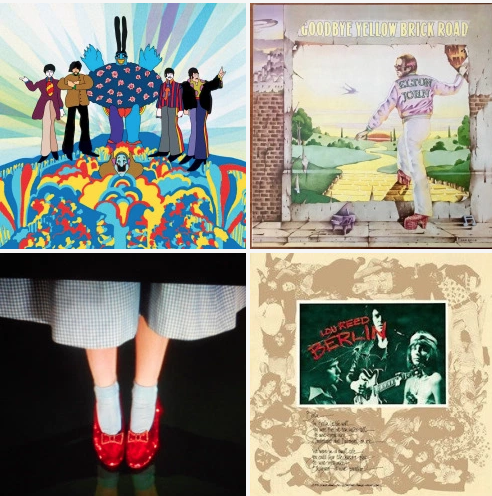
https://madelinex.com/2019/07/12/there-are-places-i-remember/
Read my review of Cherry’s autobiography,
Lick Me – How I Became Cherry Vanilla
https://madelinex.com/2010/02/26/five-stars-with-a-cherry-on-top-book-review/

Jukebox Jackie – Jackie Curtis
Angela Bowie – The Prettiest Star
Ronson On Broadway 1974
Join my ‘Bowie 1980 Floor Show’ Facebook Group
all about Bowie’s final appearance as Ziggy Stardust. Lots of info and hundreds of photos!
Click below and send a request to join!
https://www.facebook.com/groups/104046166612946/




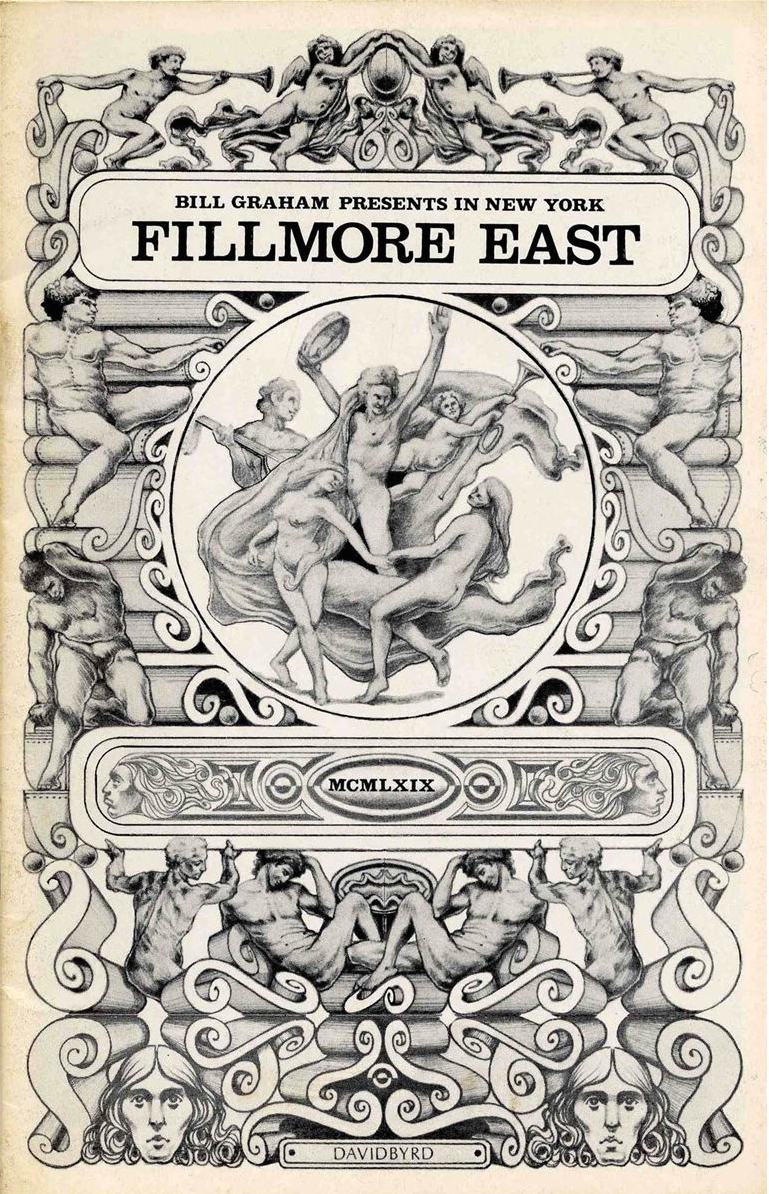
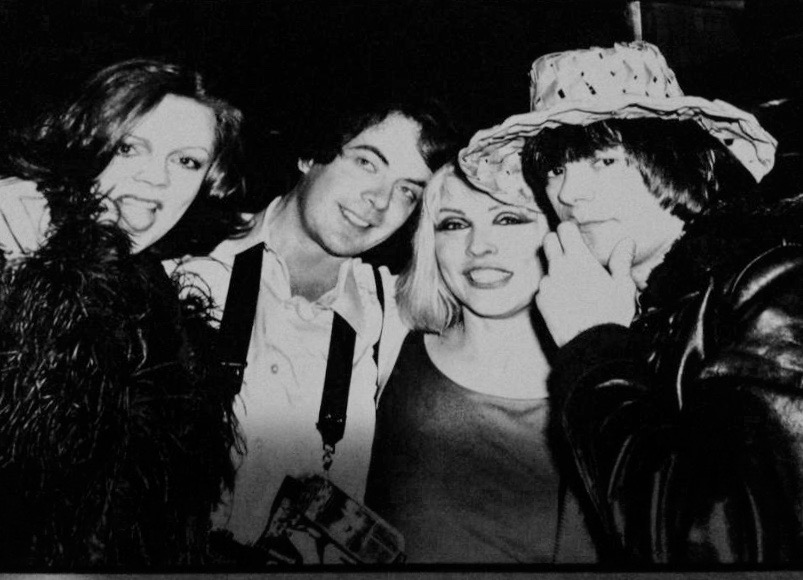
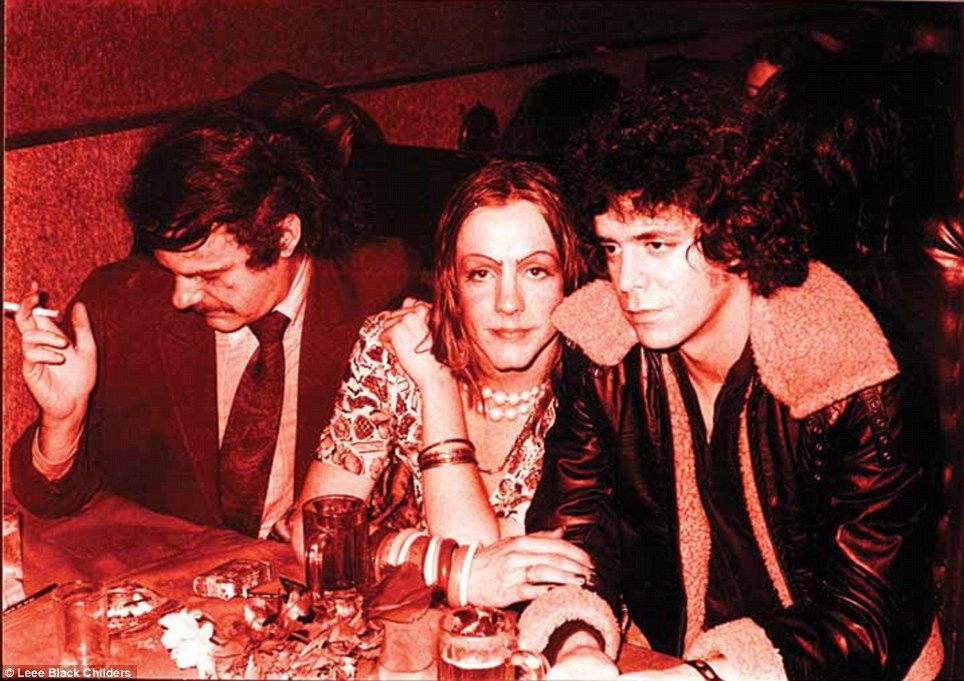


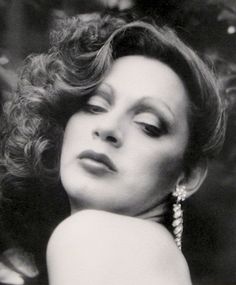








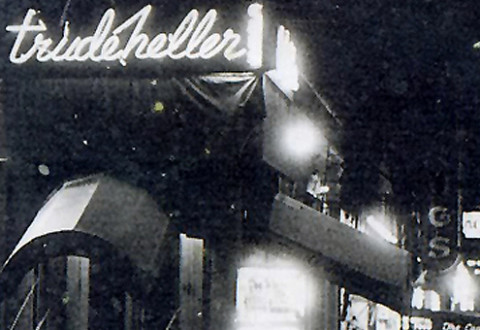
















I’ve known my darling friend Cherry for over 45 years! She is the most wonderful, precious person that I’ve ever known. I’m glad this article is in depth and kudos to all those wonderful photos! Great job! – Man Parrish
Thanks so much Manny! You are correct – Cherry is the greatest friend. She speaks very highly of you as well. I’m so happy that you enjoyed our interview. We did this as a team – at her suggestion, and I’m so happy the way it turned out. All the best to you, Madeline xxx
hi madeline, cherry played at my high school, lafayette h.s. in brooklyn. i think it was ’76.
Hello, Madeline.
You and my cousin Cherry have created a most informative and insightful piece. Kudos to you both.
Nice to hear from you Frank! Thanks for your kind words. Cherry is very dear to me.
I hope you have also read my review of her fabulous book. https://madelinex.com/2010/02/26/five-stars-with-a-cherry-on-top-book-review/
Happy holidays to you! – Madeline
Cherry is living proof reincarnation exists here on earth. She’s the real gift